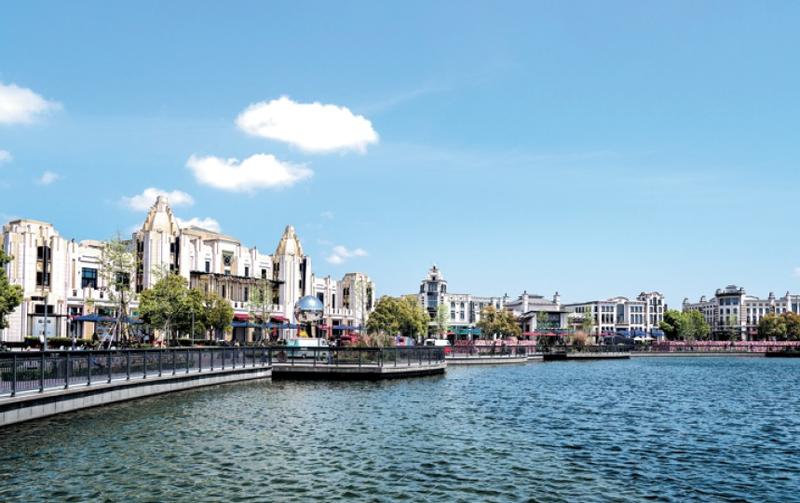 The Shanghai shopping village operated by Value Retail China is seen in this file photo. (ZHANG YAN / FOR CHINA DAILY)
The Shanghai shopping village operated by Value Retail China is seen in this file photo. (ZHANG YAN / FOR CHINA DAILY)
In the past few decades, China has quickly caught up with its international counterparts in retail properties, and the sector is further evolving and diversifying in accordance with the needs of Chinese consumers. Under the dual-circulation development pattern, various retail properties-including department stores, shopping malls, commercial complexes, duty-free shopping sites and outlets-are welcoming new opportunities in the world's second-largest economy.
Contribution of consumption has accounted for more than half of China's economy, with more diversified demand emerging from dual-circulation, urbanization and consumption upgrades, said Li Ling, president of CBRE China.
The development of modern commercial facilities will further exploit consumption demand by providing multiple consumption scenarios, thus offering tremendous investment opportunities.
Experts said comprehensive shopping centers, department stores and other brick-and-mortar stores are reviving from the impact of the pandemic from January to May 2021, with high-end shopping malls even seeing a significant increase in sales.
"Based on our observations of the retail market, consumer confidence is recovering gradually. Some luxury brands are even expanding their businesses, indicating that the retail sector is full of vitality," said Yuan Xiaochao, head of research in East China with Colliers.
Although it may take a while for conventional commercial properties to reach pre-COVID-19 levels, positive signs are everywhere. For example, there is rapid growth in sales of some domestic duty-free stores, Yuan said.
"We sit in a very fortunate place when you think about the dual-circulation strategy. We are very bullish on China's strategy as we see the growth of China. It's not just the recovery coming out of the pandemic," said Mark Israel, CEO of Value Retail China, which currently operates luxury outlet villages in China.
Israel said that their Shanghai village saw sales revenue surge 97 percent during the Labor Day holiday in comparison to the same period of 2019, and now the company is aiming to double its annual number of guests at its Shanghai village to 6 million in the coming three years.
Looking ahead, experts believe retail sales are likely to see a further increase as household disposable incomes continue to swell and policy initiatives effectively boost spending.
Shaun Brodie, senior director and head of occupier research for China at Cushman & Wakefield, said consumption upgrade will prove to be a long-term trend in China.
"With the rapid growth of China's economy, people are paying more attention to improving their quality of life. Both domestic and overseas retailers and retail property operators are constantly innovating and controlling product and service quality to meet the ever-changing tastes of Chinese consumers," Brodie said.
In the meantime, smart technology and groundbreaking retail models are driving innovative development in the retail market in China, making the customer consumption experience much more pleasant.
In fact, such notions have already been acknowledged by retailers as 67 percent of shopping centers, department stores and outlets in China's first and second-tier cities have installed smart shopping guide systems in 2020, said Cushman & Wakefield Research.
Yuan of Colliers said the integration of online and offline channels is extremely important for commercial properties, and suggested shopping malls stay in lockstep with young consumers by continually adjusting and upgrading their brands and trying to attract more new and trendy stores, in order to make their offerings unique and wide-ranging.


